@oliver1995
2016-11-14T05:50:44.000000Z
字数 2346
阅读 715
Exercise 08:Oscillatory and Motion and Chaos (2)
冯文龙
Abstract
Use python to study the oscillatory motion and chaos and complete the homework 3.18
Background
Poincare section Poincare section is preferred When we need to plot and analyse the behavior of a dynamical system. To construct Poincare section, we plot points only when the phases of the driven force are fixed, to be more specific, we plot only at times that are in phase with the driving force. The time can be determined by
Bifurcation diagram helps to analyze the transition to chaos. It can show us lines for as a function of drive amplitude, which was constructed in the following manner. For each value of F_D we have calculated \theta as a function of time. After waiting for 300 driving periods so that the initial transients have decayed away, we plotted \theta at times that were in phase with the driving force as a function of F_D. Here we plotted points up to the 428th driving period. the Feigenbaum parameter can be calculate:
Main body
code:
import pylab as plimport mathclass pendulum:def __init__(self, init_theta=0.2, init_omega=0,\length=9.8, g=9.8, time_step=0.04, q=0.5,fd=1.2, omega_d=2.0/3):self.w = [init_omega]self.theta = [init_theta]self.t = [0]self.dt = time_stepself.g=gself.l=lengthself.q=qself.fd=fdself.omega_d=omega_dself.w_n=[init_omega]self.theta_n=[init_theta]def run(self):while self.t[-1] < 10000:self.w.append(self.w[-1] + (-self.g/ self.l * math.sin(self.theta[-1]) \-self.q * self.w[-1] + self.fd * math.sin(self.omega_d * self.t[-1])) *\self.dt)self.theta.append(self.theta[-1] + self.dt * self.w[-1])if self.theta[-1]> math.pi :self.theta[-1]=self.theta[-1] - 2*math.piif self.theta[-1]< -math.pi :self.theta[-1]=self.theta[-1] + 2*math.piself.t.append(self.t[-1] + self.dt)if abs( self.t[-1]% (2 * math.pi /self.omega_d)) < self.dt /2:self.w_n.append(self.w[-1])self.theta_n.append(self.theta[-1])def show_results(self):pl.plot(self.theta_n, self.w_n,'go')pl.xlabel(r'$\omega(radians)$')pl.ylabel(r'$\theta(radians)$')pl.legend(['Fd=1.2'],loc="best")pl.show()a = pendulum()a.run()a.show_results()
For

For

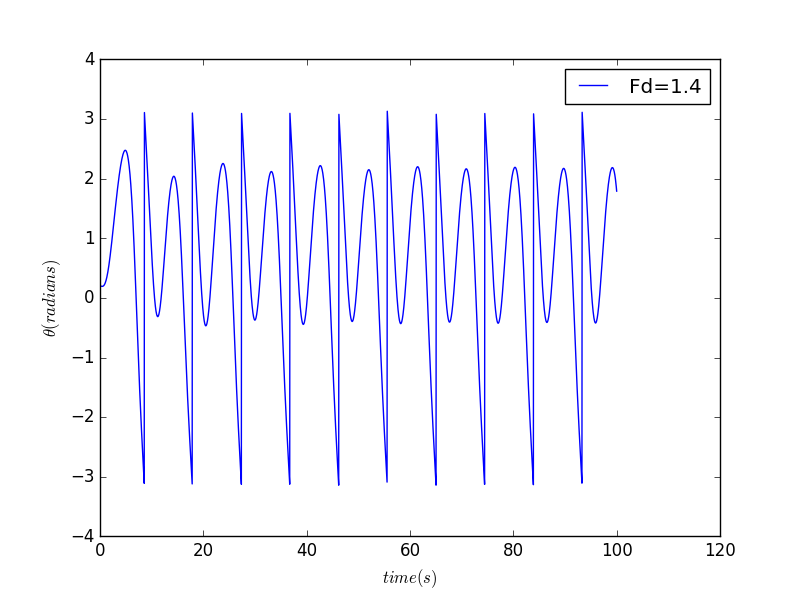
For
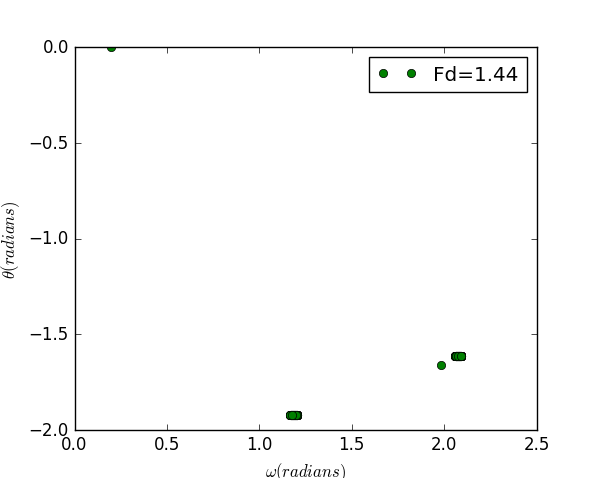
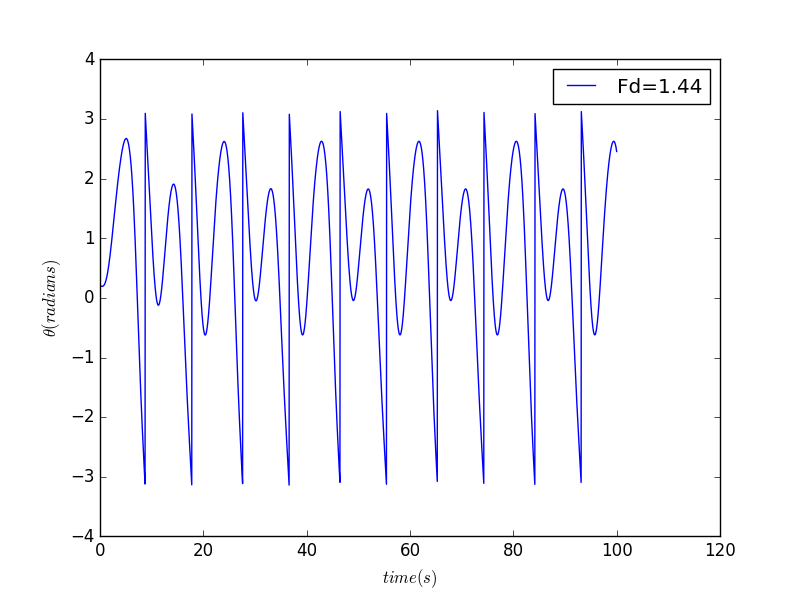
For
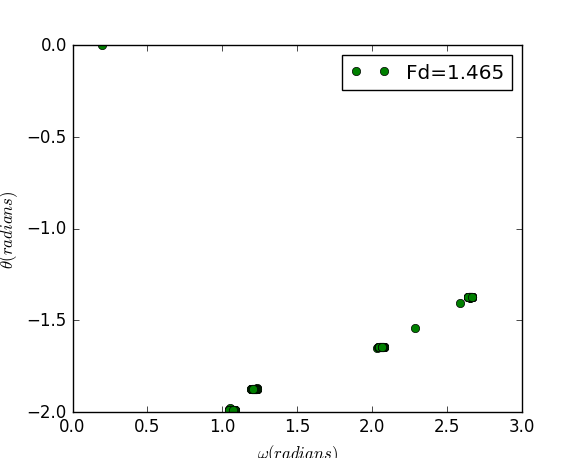
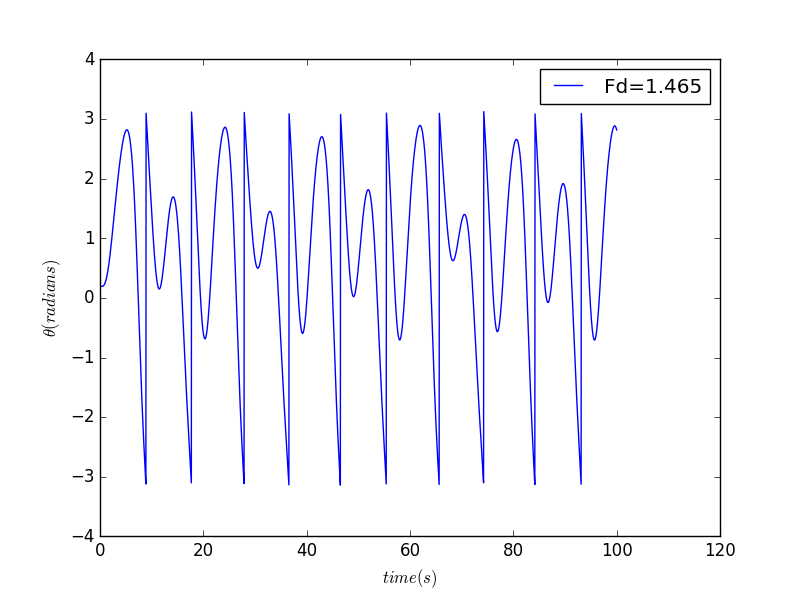
Conclusion
- It turns out that the pendulum exhibits transitions to chaotic behavior at several different values of the driving force.
- when , we can see from the picture that the period is now twice the drive period. when , the period is four time the drive period.
- The key property is that it contains frequencies that are equal to or greater than the drive frequency.
Acknowledgement
Thanks to cai's PPT
